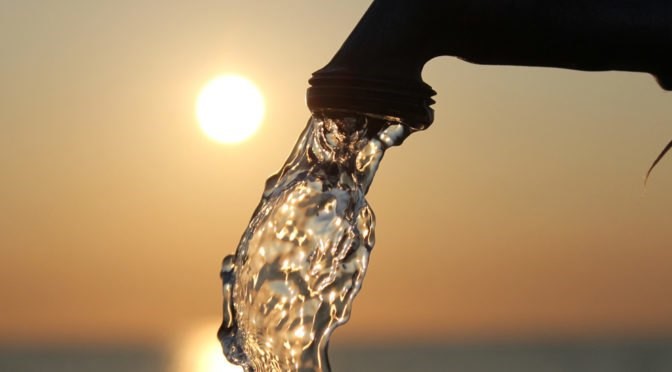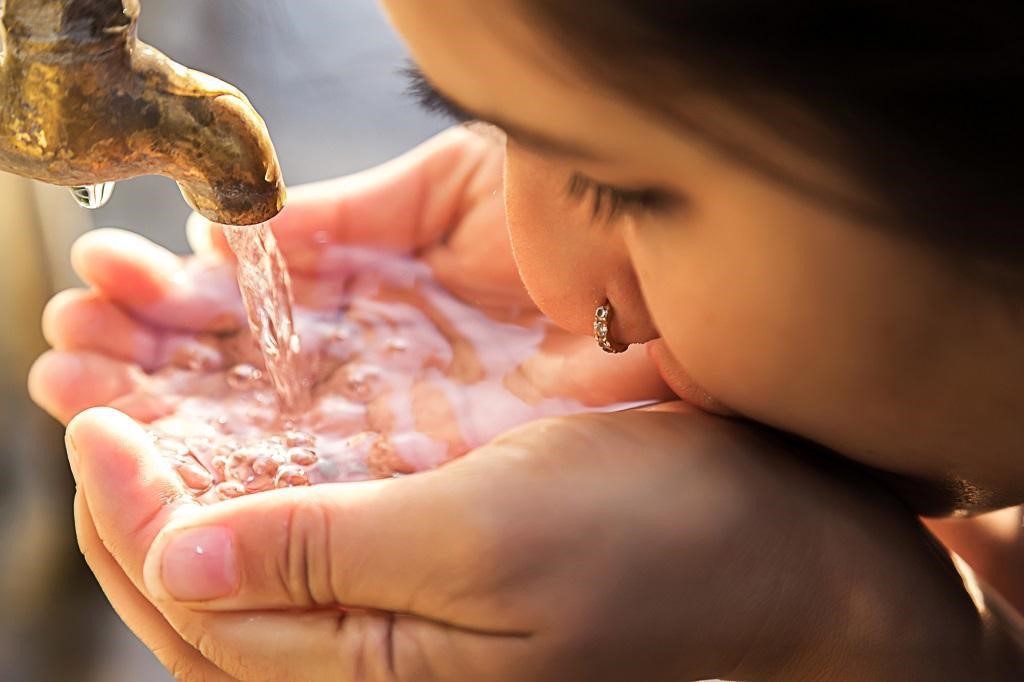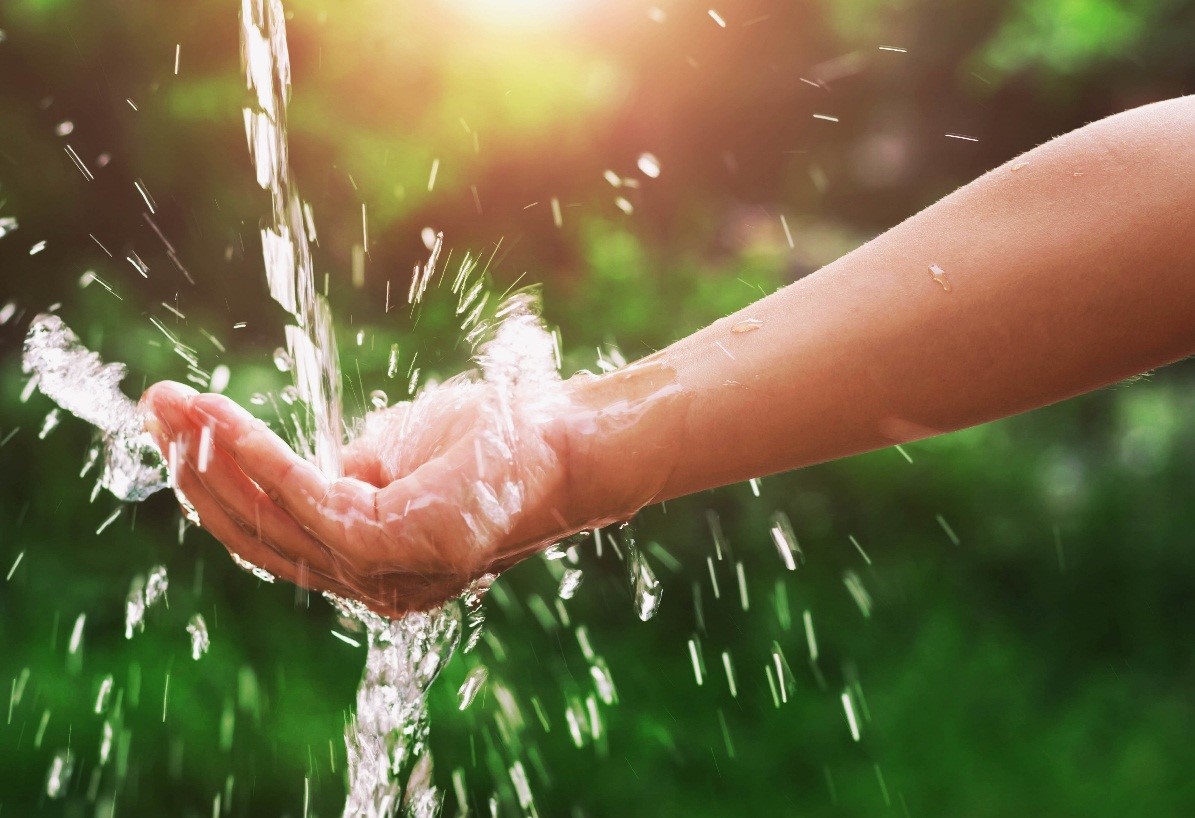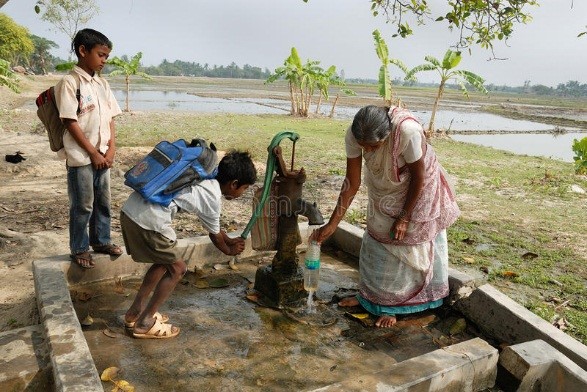People use lots of water for drinking, cooking and washing but even more for producing things such as food, paper and cloth.
A water footprint is an indicator that looks at both the direct and indirect water use of an individual, business, community, city or country.
Direct water use refers to the water we see coming out of the tap: the fresh water we use each day for drinking, cooking, showering, washing dishes and clothes, and gardening etc.
Indirect water use refers to the water that is used to manufacture the goods that we consume or produce, and the services that we use, as well as all of the water that is made unusable by pollution or wasted by non-use. That includes all of the water used to grow the food that we eat, to produce the things we use in daily life – clothes, books and furniture – and the water needed to produce the energy we use.

While this indirect water is “invisible”, we often use far more of it than we realize.
In Europe, for example, the average person directly consumes between 100-150 liters of water a day – as drinking water, for washing clothes, bathing and watering plants.
But each person also indirectly consumes anywhere between 1,500 and 10,000 liters of per day, depending on where they live and their consumption habits.

Measuring water footprints can give us a clear picture of how water is used in today’s society, and help us come up with strategies for more sustainable water usage.
Some Facts and Figures About Water Use
- Water covers 70.9 percent of the planet’s surface.
- 97 per cent of the that water is salt water.
- Around the world, 1 billion peoplestill lack access to safe water.
- Water use is growing at twice the rate of population growth. Unless this trend is reversed and we come up with a way to share water fairly and sustainably throughout the planet, two-thirds of the global population will face water “stress” by 2025
- In the USA, the average water footprintper year per capita is as much as the water needed to fill an Olympic swimming pool, an average of 7,786 liters of water per person per day.
- In China, the average water footprint is 2,934 liters of water per person per day.
- In the Netherlands, 95 per cent of the water footprint of consumption lies somewhere else in the world (due to the amount of imported goods consumed), whereas in India and Paraguay only 3 per cent of the national water footprint of consumption is external.
- It requires around 1500 liters of waterto produce 1 kilogram of wheat, and a huge 10 times more to produce the same amount of beef.
- The water footprint of a cup of coffeeis around 140 liters, a cup of tea only around 34 liters.

Your Footprint Calculator
The Water Footprint Network website offers an online calculator which estimates your personal water footprint, based on your country of residence and your patterns of consumption:
You can check out the quick individual water footprint calculator and the extended individual water footprint calculator here.
How to Reduce Your Water Footprint?
Broadly speaking, you can reduce your direct water footprint by:
- turning off the tap while brushing your teeth
- using water-saving toilets
- installing a water-saving shower head
- taking shorter showers
- only washing your clothes when necessary
- fixing household leaks
- using less water in the garden and when cleaning
- not disposing of medicines, paints or other pollutants down the sink.
When it comes to reducing your indirect water footprint, there are a number of different approaches you can take.
The food we eat makes up a huge part of our personal water footprints, and implementing some of these changes could have knock-on benefits for your health too. Examples include:
Eating less meat. Beef is one of the most water-intensive proteins, needing 15,000 liters of water per kg, followed by red meats in general. Other, less water-intensive proteins include pulses like beans, lentils and peas. Chicken has a much lower water footprint than beef, so if you’re not ready to become vegetarian or vegan just yet, giving up or just cutting back on red meat can help.
Switching coffee for tea. Cups of tea and coffee may look like they contain the same amounts of liquid, but producing coffee beans requires far more water than growing tea leaves, around 140 liters for a cup of coffee and around 34 liters for tea.
Cutting down on sugar. Drinking a bottle of cola actually consumes around two or three bathtubs full of water. Growing sugar cane uses a lot of water (and often water-polluting pesticides too), not to mention the water that goes into producing plastic packaging.
Eating less processed food. Water is required at every stage of food production – refining, processing, canning, packaging. Eating fresher food means consuming less water, sugar, salt, preservatives and chemicals.
Consuming more local produce. Producing a tank of petrol requires a lot of water, so reducing the amount of miles your food has to cover from farm to plate will also help save. And your food will be fresher and more rich in vitamins too. Win-win!
Buying quality, not quantity. The clothes we wear use huge amounts of freshwater. Cotton fabrics and denim jeans are particularly greedy. Buy well-made clothes that are intended to last, rather than huge amounts of cheaply-produced items that will need to be replaced. The same goes for any other consumer product, as practically all manufactured products – from electronics to books and cosmetics – consume water in the production process. Buying less will protect the world’s water supply and your wallet.
The responsibility for cutting back on water consumption shouldn’t just lie with consumers, of course. For people to be able to make informed decisions about which options to choose, businesses need to be transparent about their processes, and governments more forward-thinking when it comes to regulation. When information is available on the impacts of a certain article on the water system, consumers can make conscious choices about what they buy. And if governments were to bring in water-saving measures, businesses would be incentivized or perhaps even obligated, to introduce water-saving measures.

More Tips for Saving Water at Home
Install a foot tap. Rather than using the traditional, ubiquitous twist-knob taps, you can install a foot pedal which you press to control the flow of water. Using such pedals helps reduce water consumption by as much as 50 percent.
Attach a shower head to tap fittings. Installing a shower head on your tap might sound a bit strange, but trust us on this one. It is a common misconception that high-pressure, high-volume water is needed to clean tough dirt and grease from dishes. In fact, what is more effective is using a wide water spray rather than heavy water volume which of course can be achieved through the use of a shower head. Fitting a water-saving showerhead to your tap will still give you enough water and spray to clean effectively, meaning you use less water even when washing the tough stuff.
Bring a bucket. A peek into any bathroom in Australia provides a handy water-saving tip from the inhabitants of the driest continent on the planet – place a bucket in the shower. These buckets are placed under the showerhead to catch all that excess water that normally goes down the drain while you wait for the water to heat up.
Treat your wastewater at home. Generally speaking, all that water that trickles down the drain after you use it can actually be a boon for the garden. Commonly referred to as wastewater (or Blackwater and greywater), leftover water from the bathroom, kitchen and laundry is mixed with detergents, oil and dirt and is generally not appropriate for use in the garden in its waste form. However, with proper filtering and treatment it can be highly beneficial for crops. Tree hugger has some resources here on how to reuse greywater in your home and garden.
Use eco-friendly cleaning products. Using biodegradable cleaners (i.e. natural items such as lemon, tea tree oil, baking soda and vinegar) as well as phosphate-free detergents also helps to reduce water consumption and is less harmful to the environment. Using them to clean uses less water than chemically-laden alternatives. One reason for this is the inclusion of Sodium Lauryl Sulfate (SLS) in many conventional cleaning products. SLS is generally used as a foaming agent, its foaming properties triggered when coming into contact with water. These agents also need to be washed off any surface or item after use considering the harmful impact they have on human health. Compare this to using vinegar, which requires no water to offset it’s disinfecting properties and doesn’t need to be washed off a surface or item after it’s been used to clean (check out this site for the ultimate list of do’s and don’ts when it comes to cleaning with vinegar).
Vardhman Envirotech
India’s Passionate rainwater company
This article is published on:
https://en.reset.org/save-water-reduce-your-water-footprint
We would like to spread this for the benefit of fellow Indians.
